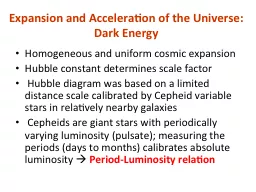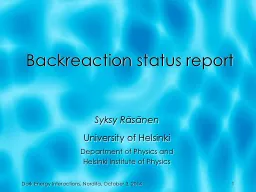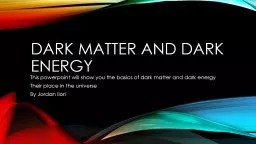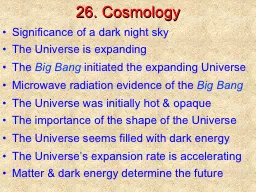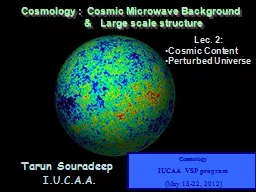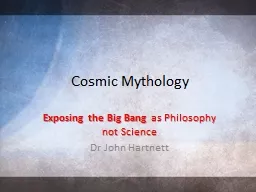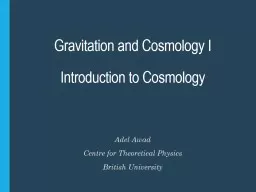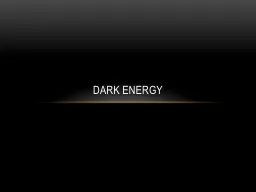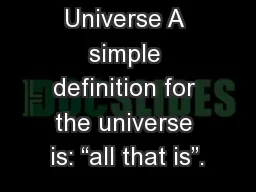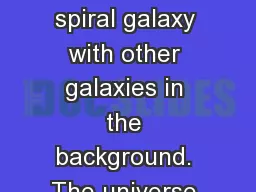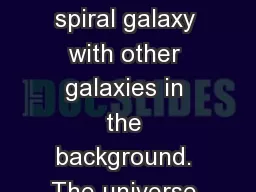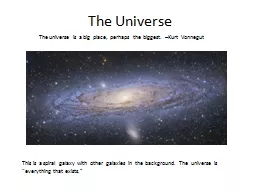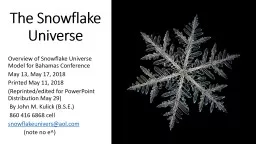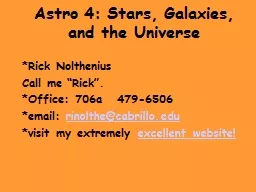PPT-Expansion and Acceleration of the Universe: Dark Energy
Author : tawny-fly | Published Date : 2016-02-21
Homogeneous and uniform cosmic expansion Hubble constant determines scale factor Hubble diagram was based on a limited distance scale calibrated by Cepheid variable
Presentation Embed Code
Download Presentation
Download Presentation The PPT/PDF document "Expansion and Acceleration of the Univer..." is the property of its rightful owner. Permission is granted to download and print the materials on this website for personal, non-commercial use only, and to display it on your personal computer provided you do not modify the materials and that you retain all copyright notices contained in the materials. By downloading content from our website, you accept the terms of this agreement.
Expansion and Acceleration of the Universe: Dark Energy: Transcript
Download Rules Of Document
"Expansion and Acceleration of the Universe: Dark Energy"The content belongs to its owner. You may download and print it for personal use, without modification, and keep all copyright notices. By downloading, you agree to these terms.
Related Documents

